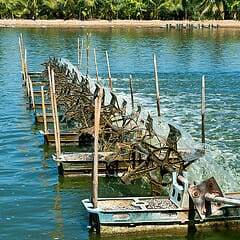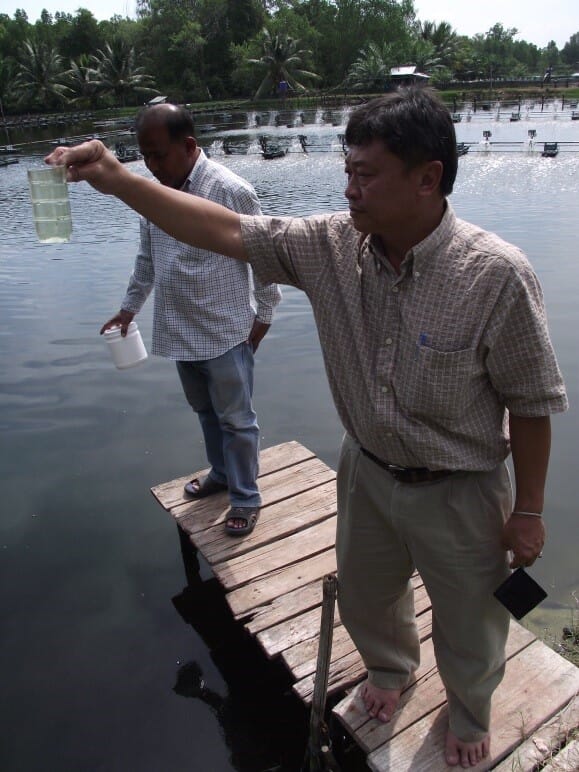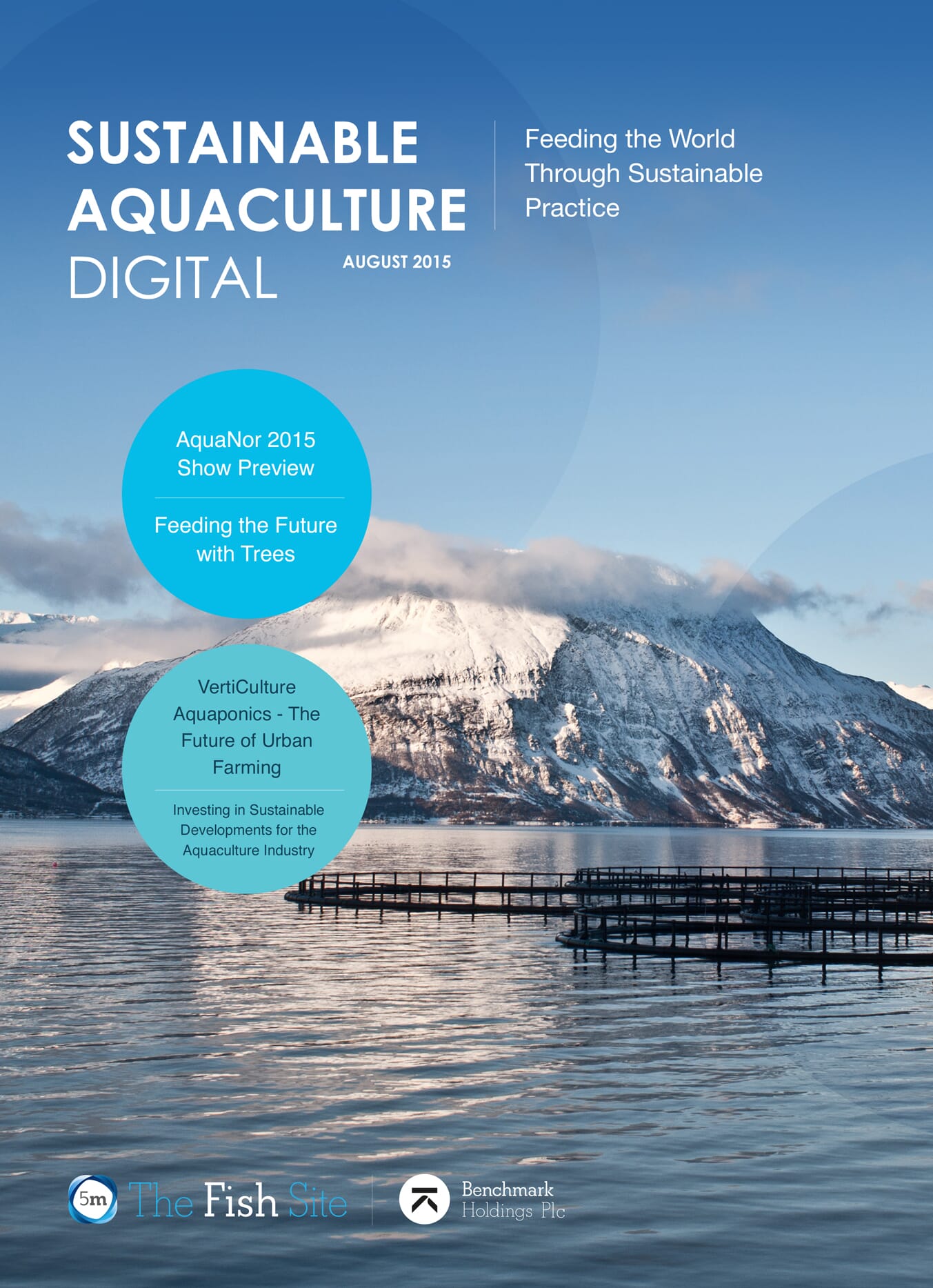The project is being launched by the National Fish & Seafood Company, a US based division of Pacific Andes Group which is a founding member of the GAA and an industry leader in seafood sustainability, along with the GAA and the Sustainable Fisheries Partnership (SFP).
The company believes it is important that smaller shrimp farms, which make up 80 per cent of shrimp aquaculture, have access to high international certification standards, putting them on a level playing field with bigger companies who are certified to standards, such as BAP and ASC, which currently dominate the market.
“National Fish & Seafood is the only company working with 120 small fish farmers in this way,” said James Baros, Aquaculture and Sustainability Coordinator, National Fish & Seafood, speaking to TheFishSite.
“We are running Aquaculture Improvement Projects and developing a model that encourages all fish farmers, especially small farmers, to improve culture methods and to comply with rigorous environmental and social standards. This provides the opportunity to make healthy, safe, and sustainably raised seafood while providing job opportunities for millions of people in the developing world. A food production system that is truly sustainable environmentally, socially, and economically is a win-win for producers and consumers alike,” Mr Baros continued.
The demand for certified products is increasing around the world as consumers want products which they know have been produced safely and that have guaranteed traceability.
Many small scale farmers are therefore becoming marginalised, highlighting the need for something that will engage them in responsible aquaculture. 
That answer is the BAP Group Programme, said Mr Baros.
BAP Group Programme
The aim of the project is to make improvements on a farm scale level so that small shrimp producers can reach the new BAP Group Programme standard.
Individual farms can join together to be certified by the standard therefore reducing costs whilst also generating a higher profit and better quality of produce.
“The costs and technical expertise required to achieve BAP, or any other third party certification, is above and beyond what a small shareholder can afford,” commented Mr Baros.
At present, high costs and poor education are holding back many small farmers from being able to join many of the available certification schemes.
The shrimp industry is also very fragmented, said Mr Baros, and many farms are lacking good biosecurity or management practices which impedes on their likelihood of becoming certified.
“Small farmers do not have the best infrastructure and they do not always understand biosecurity concerns. For example they may only have one building to store everything from fertilizer to feed.
Many farmers are also illiterate and so do not keep farm log books of activities which are required by many standards,” explained Mr Baros.
In order to test the efficiency of the programme, four pilot projects are currently underway in India, Viet Nam and Indonesia. The programme is expected to become public in early 2015, with the first farms being certified in the spring.
From application to certification, the process is expected to take around two to three months, commented Mr Baros. National Fish & Seafood is also helping to fund and assist with the changes that farmers must make to their farms in order to meet the standard.
“We are currently working with the GAA to hold workshops for farmers, educating and training them on best practice,” said Mr Baros.
Guaranteed Traceability
So as to audit farms to the standard, the programme is working with Farm Force to create technology that ensures shrimp are fully traceable and produced responsibly. 
“Farm Force is a powerful tool for recording all the inputs and practices that go into the cultivation of aquatic organisms. Previously, the shrimp industry has been plagued by disconnect and fragmentation in which product may pass hands several times with little oversight or ability to track the product. This permits for adulteration of the product and leaves the buyer with very limited knowledge regarding the inputs and practices that went into the production,” said Mr Baros.
The state-of-the-art real time access technology allows everything on the farm to be traced. The auditors can use this to check that conditions for the standard have been met. The results will then flag any conditions that have not been met.
The technology will also be used by shrimp farmers as a farm management tool, storing data on:
- stocking of post larvae
- certificates from hatcheries
- stocking rate and pond designation
- feed lot number
- Feed Conversion Ratio
- water treatment and discharge
- water quality testing results
- employee records and training
- growth rate
- copies of sales invoices and receipts
- land deeds or leases
- animal transfer documents
- lot numbers for all raw material sold from the farmer to the processor
It will also allow the farmer to monitor farming activities, track orders and purchases, calculate feed usages and FCRs, monitor inventories, determine withdrawal periods, balance credits and loans and model growth rates and crop harvests, explained Mr Baros.
Accessible off any android device, the technology captures and saves data out in the field which can then be sent straight to the cloud when Wi-Fi or 3G is available. This technology also provides real time access and is quick and easy to use, therefore helping farmers who may struggle to keep paper records due to poor literacy skills.
“Small farmers are now getting access to the expensive technology that big farms use to manage their farms,” said Mr Baros. “It is also customisable to suit what the farmer needs.”
Case Study: Thailand Shrimp Farmer
I have been in the shrimp farming business for over 25 years. I started with two ponds, and now operate three farms, 3-4 ha each.
I employ my family members who live in my village including my cousins and nephews. 
I have had many up’s and downs growing shrimp on my farms. Three years ago I decided to become BAP certified, first on one farm, and now all of them are certified.
American buyers began asking for BAP shrimp more than five years back and since then more and more importers want BAP. For me, it is very easy to sell my shrimp to the processor since their buyers are asking for certified product. At times when my neighbors have had trouble selling their shrimp because of a surplus in the market, I have no problem.
This gives my family assurance that we can always sell our shrimp at the best possible price.
Some of the requirements of the BAP farm standard were difficult to meet at first and we had to work hard for one year to meet the standard. But the guidelines have been beneficial to my ponds which now experience less disease and better growth than before.
I did not know about biosecurity before I was introduced to BAP, now other farms ask me how they can secure their farms against the spread of disease.
Good health and management is key for shrimp farmers. There are so many farms here and we all must share the same waterways. If everyone improves their farming methods to meet BAP standards, than we all are better off.
Get Involved 
If you would like to become certified to the BAP Group Programme, please speak to your processor who will then contact the programme on your behalf.
All of the processors currently involved in the project are BAP certified, or are on their way to becoming certified.
Farms eligible to take part in the programme must be small-scale (2-8 hectares in size) and are usually family run or have few employees.
For more information, contact National Fish & Seafood or email jbaros@nationalfish.com
 This article was taken from the February 2015 Sustainable Aquaculture Digital. To sign up for the August 2015 edition, please click here.
This article was taken from the February 2015 Sustainable Aquaculture Digital. To sign up for the August 2015 edition, please click here.




